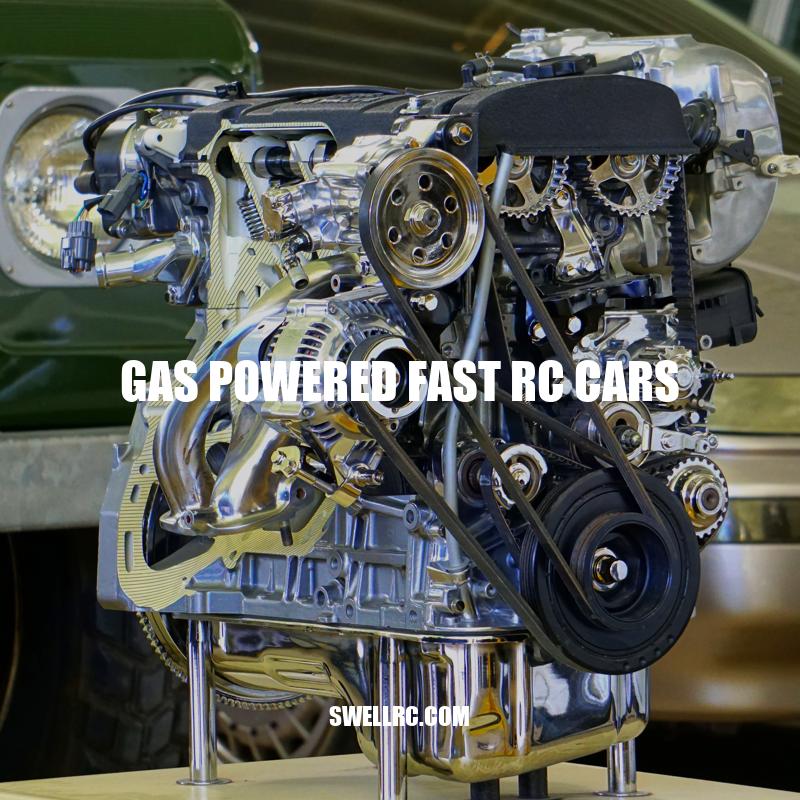Gas-Powered RC Cars: The Thrill of Speed
Gas-powered RC cars are a popular hobby among car enthusiasts and collectors. They offer a realistic experience of owning and driving a sports car, but in a miniature size. Gas-powered RC cars run on a mixture of gasoline and oil, much like a real car. They have a two-stroke engine that produces high speeds, great acceleration, and noise, making it easy to get lost in the excitement of the experience. The cost of purchasing and maintaining a gas-powered RC car is higher than that of an electric one, but it’s a worthy investment for the realist and most exhilarating experience. These cars are also considerably larger and heavier, making them more stable in windy environments and less likely to be adversely affected by obstacles while driving or racing. Additionally, the ability to refuel and run on an unlimited power source as long as there’s fuel makes them more versatile than their electric counterparts. In this article, I will guide you through what it takes to own and maintain a gas-powered RC car, the various models and brands to consider, and the heart-throbbing experience of racing at top speed.
Building and Maintaining a Gas-Powered RC Car
Building and maintaining a gas-powered RC car requires mechanical aptitude and attention to detail. Below are some of the steps involved in building and maintaining your gas-powered RC car:
- Assembling the car kit – assembling a gas-powered RC car kit can take several hours, even for experienced builders. It involves fitting the radio system, installing the engine, and all the necessary mechanical components such as gearbox, suspension systems, and shock absorbers. It requires careful attention, especially when doing the wiring and installing the throttle servo and brake system.
- Maintaining the car – once you’ve assembled your gas-powered RC car, you must ensure you follow the manufacturer’s guide regarding regular maintenance. Here are some of the essential maintenance aspects to consider:
- Checking the oil levels – a two-stroke engine requires oil and gasoline to lubricate its parts, and it’s essential to check the oil level regularly and top it up as needed.
- Replacing the air filter – gas-powered RC cars need air filters to protect their carburetor from damage caused by dirt, dust, or debris in the air. Replace it once it gets dirty, or when it gets clogged with dust.
- Checking tire pressure – gas-powered RC cars need to have proper tire pressure just like any other vehicle. Make sure to check the tire pressure regularly to avoid excessive wear on the tires due to under-inflated or over-inflated tires.
There are plenty of websites and communities that can offer support and tips on how you can build and maintain your gas-powered RC car. For example, NitroRCX.com offers an extensive selection of gas-powered RC cars, parts, and upgrades. Additionally, HobbyTron.com has a wealth of tutorials, guides, and videos that can help you with your RC car building and maintenance.
How do you maintain an RC car?
Maintaining an RC car is easy if you follow a few basic steps. You can use basic household cleaners to keep your vehicle clean and in top form. Start by cleaning the car with an air compressor and brush to remove dust and debris. Next, spray the car with a general all-purpose cleaner and scrub the chassis. Remove and clean the wheels before hosing off the vehicle. Finally, use an air compressor to blow dry the vehicle. You can also check out websites such as HobbyTron or RC Planet for more information and products that can help with the maintenance of your RC car.
When selecting a gas-powered RC car, there are several things to consider to ensure that you get the right car for your skills and interests. Below are some of the factors to consider when choosing the right gas-powered RC car for you:
- Type of RC car – there are different types of gas-powered RC cars, including on-road, off-road, and drift cars. Each model has its strengths and weaknesses, so choose a car that fits your interest and driving style.
- Speed – gas-powered RC cars can attain incredible speeds – some can reach speeds of up to 100 mph. Consider your site’s size or the track you will be racing on when deciding on the right car speed for you.
- Size – gas-powered RC cars come in various sizes, including 1/10, 1/8, and 1/5 scales. Choose a size that suits your budget, storage space, and portability needs.
- Handling – handling is an important factor when selecting a gas-powered RC car. Consider the type of terrain you’ll be racing on and look for a car that suits that terrain. Some cars may be designed for off-road racing, while others are more suitable for flat surfaces like pavement or asphalt.
- Price – gas-powered RC cars can sometimes be more expensive than electric RC cars. However, they offer a more realistic driving experience and thrilling performance.
There are many websites and brands to consider when looking for the best gas-powered RC car for you. HPI Racing, Redcat Racing, and Team Losi Racing are some of the most popular brands among car enthusiasts, and they offer a range of models with different features and price ranges. Make sure to do your research and find a car that suits your needs and budget.
What are gas powered RC cars called?
Gas powered RC cars are commonly known as Nitro RC Cars. These cars are powered by fuel that is typically a combination of nitromethane, methanol, and oil. Nitro RC Cars are popular among hobbyists and enthusiasts because of their speed, power, and the sound they make. Online retailers such as Amazon and Horizon Hobby offer a wide variety of Nitro RC Cars for purchase.
Gas-Powered RC Car Racing
Gas-powered RC car racing is an excellent way to showcase your driving skills and compete against other car enthusiasts. RC car racing events are held worldwide, and there are various types of racing categories, such as on-road, off-road, and drift races. It is a highly competitive sport that requires speed, agility, and precision. One of the most popular gas-powered RC car racing events is the ROAR Fuel Off-Road National Championships, held in various parts of the United States.
Apart from competing, racing gas-powered RC cars can offer a unique and thrilling experience. You can feel the adrenaline rush as your car whizzes past other racers on the track. Gas-powered RC car racing is also an excellent social event where you can meet and connect with other car enthusiasts who share the same passion.
To get started in gas-powered RC car racing, you will need a car, fuel, and other equipment, such as a radio controller, starter box, and spare parts. You can also join local RC car racing clubs or visit tracks to see the sport in action and meet other enthusiasts.
In conclusion, gas-powered RC cars offer a realistic and exhilarating driving experience that is perfect for RC car enthusiasts and racing enthusiasts alike. Whether you want to race competitively or just have some fun, gas-powered RC car racing has something for everyone. With the right equipment and training, you can master this highly competitive sport and enjoy the thrill of racing gas-powered RC cars.



